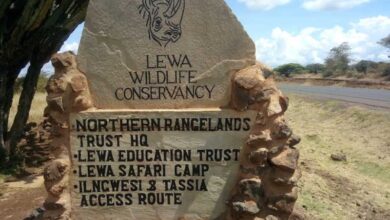
Sibiloi National Park is a protected area located in Northern Kenya. It was founded in 1973 and has a footprint of roughly 1,570 square kilometers. The largest desert lake in the world, Lake Turkana, has the park located on its eastern bank.
Sibiloi National Park’s main goal is to preserve and safeguard the region’s distinctive fauna, landscapes, and archaeological monuments. The park is renowned for its numerous ecosystems, which include rocky outcrops, volcanic structures, and semi-desert grasslands. Numerous fossil sites are one of Sibiloi National Park’s noteworthy characteristics. The region is well known for its numerous paleontological finds, notably those that pertain to the evolution of humans. Due to the significant discoveries made there the phrase “Cradle of Mankind” is frequently used to describe it.
One of the most significant paleontological sites in the world is found at Koobi Fora, which is a part of Sibiloi National Park. There have been several early hominid fossils discovered, including those of Homo habilis and Homo erectus. These discoveries have made a significant contribution to our comprehension of human evolution. Sibiloi National Park is notable for its paleontological features as well as being a haven for a diversity of species. Sibiloi is an important crocodile breeding habitat and a resting place for migrating ducks. Zebras, Grant gazelles, lions, leopards, striped hyenas, Beisa oryx, greater kudu, cheetahs, and northern topi are just a few examples of the terrestrial wildlife. Lake Turkana is home to about 350 different species of birds, both terrestrial and aquatic.

Sibiloi National Park is not as easily accessible as some other parks in Kenya due to its isolated location and rough terrain. However, it provides a distinctive and satisfying experience for tourists drawn to paleontology, wildlife, and the grandeur of the natural world. The Turkana, the Gabra, and the Dassanach are communities with extremely rich and pure traditional traditions that surround Sibiloi.




